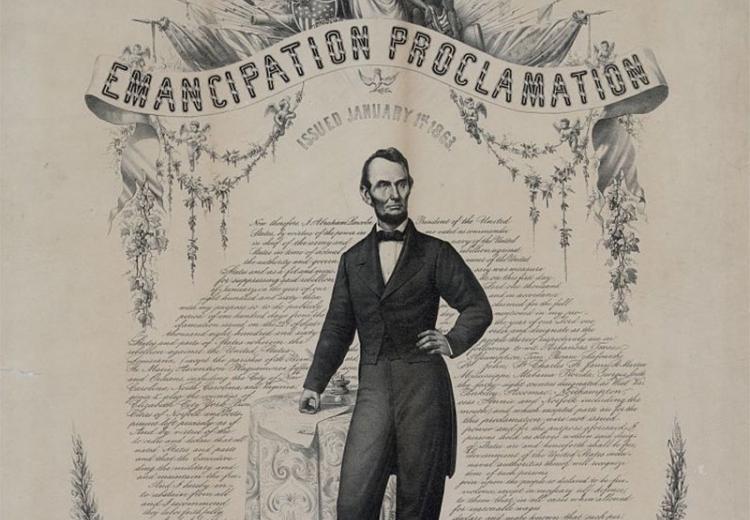Student Activity
Emancipation Proclamation: Activity 2. The Steps That Led To Emancipation

Photo caption
Emancipation Proclamation.
Examine Lincoln's March 6, 1862 message to Congress and his July 12, 1862 appeal to border-state Congressmen.
- How did Lincoln view the "cause" of emancipation in offering this plan?
- Why might his plan have been rejected by abolitionists?
- Why might it have been rejected by slave-holding interests?
- What might have been the reaction of African Americans?
Examine Lincoln's September 13, 1862 reply to a committee of Chicago religious leaders
- What does this document reveal about Lincoln's views on the relationship between emancipation and the essential principles of American constitutional democracy?
- What can we infer from the document about the views held by those to whom he wrote?
Examine the Preliminary Emancipation Proclamation of 1862 and Lincoln's December 1, 1862 Annual Message to Congress
- Preliminary Emancipation Proclamation of September 22, 1862
- December 1 1862 Annual Message to Congress
- In his Annual Message to Congress, Lincoln's proposal for emancipation has three elements. What are they? Which ones are absent from the Emancipation Proclamation?
- Why does Lincoln's emancipation proposal in the State of the Union require an amendment to the Constitution?
- How did these official pronouncements of emancipation fit into Lincoln's war plans?
- What do they reveal about his struggle to attract and maintain political support?
- From Lincoln's point of view, how significant was the Emancipation Proclamation in his effort to define and exert his leadership in the crisis of the Civil War?
- How significant has it become in our view of him as a national leader?
- Comment on the various pressures and personal beliefs that influenced Lincoln as he shaped his final policy on emancipation.
Related on EDSITEment
Student Activity
